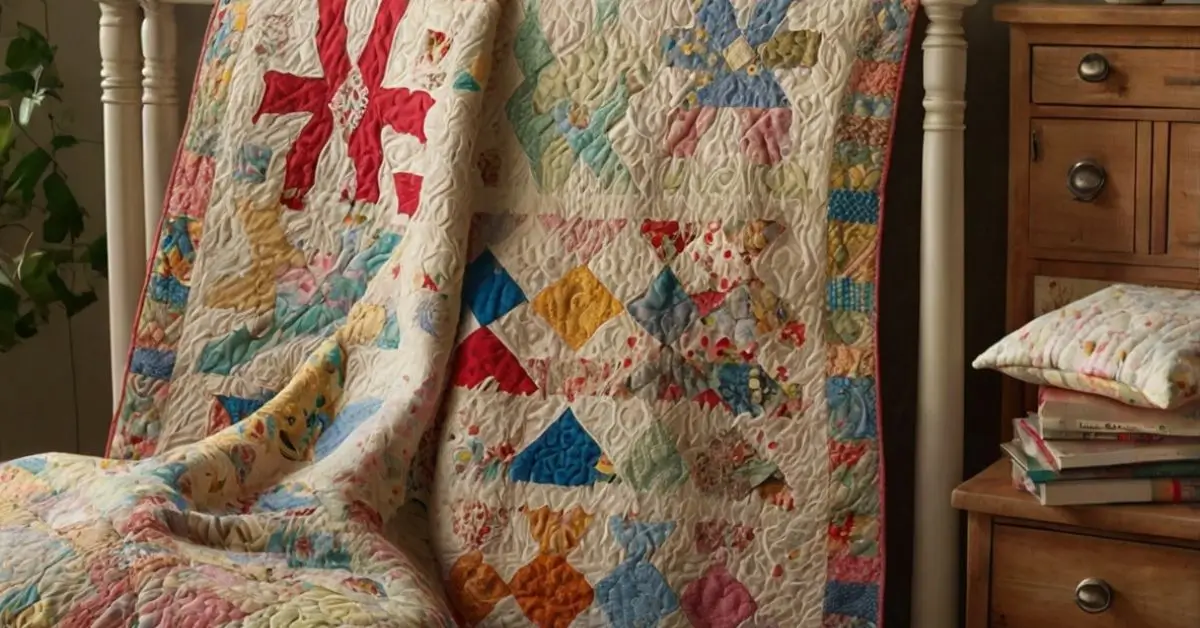Quilts have a rich history and continue to play a significant role in home décor, comfort, and artistic expression. Understanding the types of quilts available can help you choose the perfect one for your needs, whether you’re decorating a cozy bedroom or crafting a meaningful gift. From traditional patchwork to modern art quilts, there’s a wide range of options to explore. This article dives into the various styles, materials, and functions of quilts, ensuring you make an informed decision.
The Evolution of Quilting
Quilting dates back centuries and has roots in various cultures, including ancient Egypt and early America. Historically, quilts were essential for warmth and survival, but today they also serve decorative and sentimental purposes. Many types of quilts showcase intricate craftsmanship and storytelling, especially in heirloom and commemorative designs.
Most Popular Types of Quilts
Patchwork Quilts
Patchwork quilts are among the most recognizable types. They involve sewing together different fabric pieces into a larger design. Patterns may be geometric or abstract. These quilts often feature cotton or flannel, offering breathability and softness, ideal for everyday use.
Appliqué Quilts
Appliqué quilts are created by sewing fabric shapes onto a base layer, often forming floral or scenic motifs. This quilt type allows for creative freedom and detailed imagery, making it a favorite for decorative or commemorative use.
Whole Cloth Quilts
Unlike patchwork or appliqué designs, whole cloth quilts use a single piece of fabric for the top layer. The beauty lies in the stitching pattern, which may feature swirling, feathered, or floral designs. These quilts are elegant and less visually busy, ideal for modern minimalist bedrooms.
Crazy Quilts
Crazy quilts are known for their randomness—irregular pieces of fabric sewn together without a defined pattern. Originally popular in the Victorian era, these quilts often use luxurious fabrics like silk and velvet and include embroidery, making them more artistic than functional.
Art Quilts
Art quilts are primarily decorative and are often displayed like paintings. These quilts stretch the boundaries of traditional quilting by incorporating mixed media, fabric dyeing, and unconventional designs. Art quilts are ideal for galleries, exhibitions, or creative home décor.
Material Matters: Choosing the Right Fabric
The fabric type greatly influences the texture, durability, and warmth of the quilt. Although cotton is still the most popular material for most kinds of quilts, other materials have certain advantages.
Cotton
Cotton is breathable, lightweight, and easy to care for. It’s used in most traditional and modern quilts alike, especially in patchwork and appliqué quilts.
Flannel
Flannel adds extra warmth and softness. It’s perfect for baby quilts or winter bedding.
Wool
Wool quilts are excellent insulators and are used in colder climates. They may be heavier but offer superior warmth.
Silk
Silk gives quilts a luxurious feel and appearance. Used primarily in decorative or heirloom quilts, silk must be handled with care.
Polyester Blends
Polyester or poly-cotton blends are more affordable and wrinkle-resistant. These materials are common in machine-made or store-bought quilts.
Quilting Techniques
Different types of quilts also vary based on quilting techniques.
Hand Quilting
Hand quilting is time-consuming but valued for its personal touch. Many heirloom quilts are hand-stitched.
Machine Quilting
Machine quilting is quicker and more uniform. It’s commonly used in mass-produced and modern quilts.
Longarm Quilting
This technique involves a specialized sewing machine and is ideal for intricate stitching over large surfaces. It’s popular in both artistic and professional quilting.
Seasonal and Functional Variations
Summer Quilts
These quilts are lightweight and breathable. Cotton or bamboo-filled quilts are ideal for warmer weather.
Winter Quilts
Thicker fillings like wool or down make these quilts suitable for cold climates. Some types of quilts even include thermal layers.
Baby Quilts
Soft, hypoallergenic fabrics such as organic cotton or bamboo are preferred. Baby quilts are usually smaller and easier to clean.
Weighted Quilts
Weighted quilts, also called gravity blankets, are used for therapeutic purposes. They apply gentle pressure to promote calm and reduce anxiety.
Memory Quilts
Made from clothing or textiles of sentimental value, memory quilts commemorate events like graduations, weddings, or the passing of a loved one.
Regional and Cultural Quilt Styles
Amish Quilts
These quilts are hand-stitched and feature solid fabrics with geometric patterns. The artistry reflects simplicity and precision.
Hawaiian Quilts
Often made with appliqué techniques, Hawaiian quilts have bold floral or symbolic motifs. They use high-contrast colors and reflect Polynesian heritage.
Indian Kantha Quilts
Kantha quilts are stitched from layers of old saris or cloth using a running stitch. They are colorful, eco-friendly, and rich in cultural significance.
Japanese Sashiko Quilts
These use a decorative stitching method that strengthens fabric. Sashiko quilts often feature indigo and white color schemes with geometric patterns.
Comparison Chart: Types of Quilts
| Type of Quilt | Fabric Used | Primary Use | Technique | Weight | Popular Region |
| Patchwork | Cotton | Everyday use | Pieced Sewing | Light | Global |
| Appliqué | Cotton, Felt | Decorative | Appliqué Stitch | Medium | North America, Europe |
| Whole Cloth | Silk, Cotton | Elegant Bedding | Intricate Stitch | Light-Med | Global |
| Crazy Quilt | Velvet, Silk | Artistic Display | Irregular Pieces | Medium | USA, UK |
| Art Quilt | Mixed Media | Wall Art | Varied Techniques | Light | Global |
| Kantha Quilt | Old Saris, Cotton | Light Bedding | Running Stitch | Light | India, Bangladesh |
| Sashiko Quilt | Indigo Cotton | Decorative/Utility | Sashiko Stitch | Light | Japan |
| Weighted Quilt | Cotton + Weights | Therapeutic | Machine Quilted | Heavy | Global |
Choosing the Right Quilt for You
Selecting among the various types of quilts depends on your personal needs and preferences.
- For daily use: Choose cotton patchwork or whole cloth quilts.
- For colder weather: Opt for wool or flannel-based winter quilts.
- For gifting: Consider custom appliqué or memory quilts.
- For home décor: Artistic or cultural quilts like Sashiko or Kantha add flair.
Quilting for Beginners
If you’re interested in making your own quilt, start with a simple patchwork design. Use pre-cut fabrics, follow basic piecing methods, and practice on small baby quilts or throws before attempting larger projects.
Invest in basic tools like a rotary cutter, cutting mat, sewing machine, and quality thread. Choosing beginner-friendly types of quilts can make your first quilting experience enjoyable and rewarding.
Sustainability and Eco-Friendly Quilts
Modern quilters are increasingly adopting sustainable practices by repurposing old clothes, using organic cotton, and minimizing waste. Eco-conscious types of quilts like Kantha or upcycled patchwork quilts are not only creative but environmentally friendly.
Conclusion
Exploring the different types of quilts opens up a world of artistry, culture, and comfort. Whether you’re buying one for warmth or crafting your own for self-expression, there’s a quilt to match every lifestyle and aesthetic. From classic patchwork to innovative art quilts, the possibilities are as boundless as your creativity.
FAQ’s:
1. What is the most common type of quilt?
The patchwork quilt is the most common type due to its simplicity and versatile design options, making it a favorite among both beginners and seasoned quilters.
2. Are quilts only used in cold weather?
No, quilts are not limited to cold weather. Many lightweight types of quilts, such as summer quilts and Kantha quilts, are suitable for warmer climates.
3. Can I wash all types of quilts in a machine?
While most cotton quilts are machine washable, delicate or decorative quilts like silk or appliqué should be hand-washed or dry-cleaned.
4. What’s the difference between a quilt and a comforter?
Quilts are thinner, usually layered and stitched, while comforters are thicker and filled with down or synthetic materials without detailed stitching.
5. Are handmade quilts better than machine-made?
Handmade quilts offer a personal touch and unique craftsmanship, while machine-made quilts provide uniformity, speed, and affordability.
6. Can quilts be used as wall art?
Yes, art quilts and many decorative types of quilts are designed to be hung and displayed like paintings, serving as beautiful and meaningful home décor.












